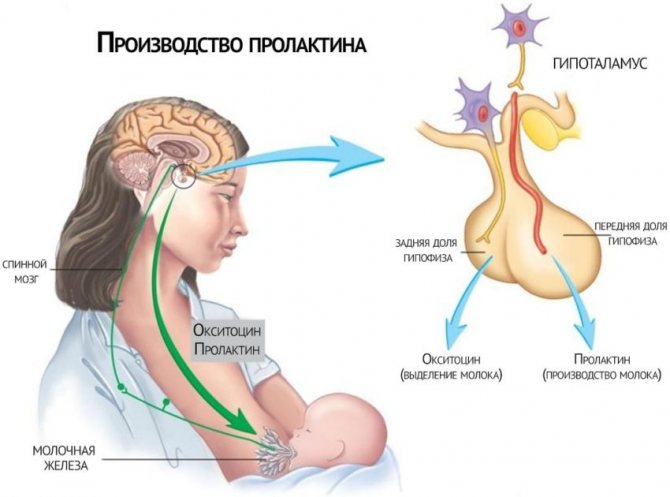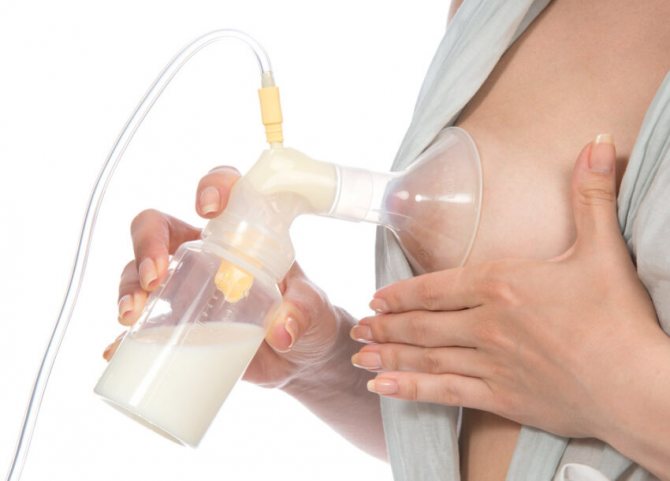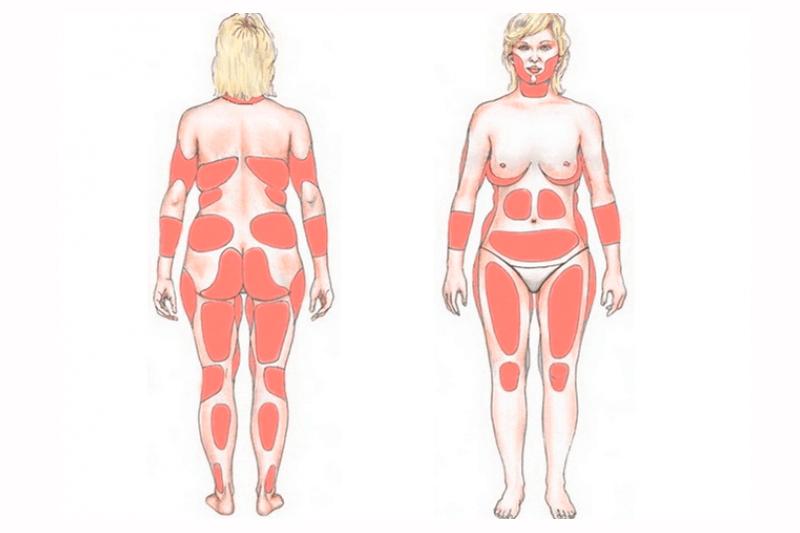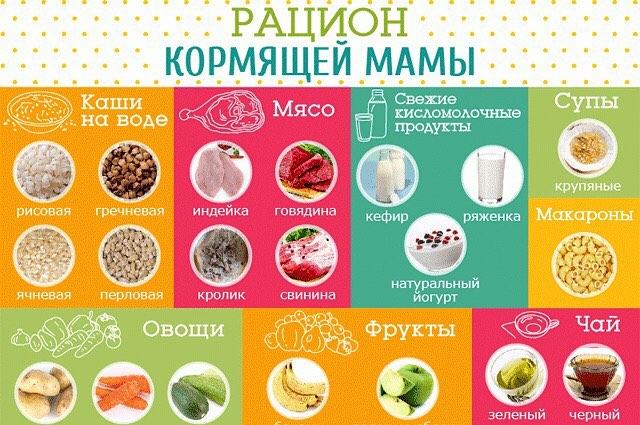The hormone prolactin is one of the most important biologically active substances that regulate physiological processes in a woman’s body, and also ensure the formation of the lactation process. The quality of breastfeeding and its duration directly depend on the concentration of this hormonal component. For young mothers, information will become relevant about the physiological norm of prolactin during breastfeeding, as well as ways to increase it in the event of a diagnosed deficiency.
General characteristics
The place of production of this biologically active substance is the anterior lobe of the pituitary gland. Partially, the placenta, mammary glands, immune and nervous systems take part in the synthesis of prolactin. The main functions of this hormone include:
- Function of protection against unwanted pregnancy during breastfeeding;
- Reduced pain threshold;
- Regulation of milk synthesis in the mammary glands in the postpartum period;
- Regulation of water-electrolyte balance and other metabolic options;
- Stimulation of sexual desire;
- Acceleration of regenerative processes in the area of blood vessels;
- Participation in calcium metabolism;
- Participation in the process of maturation and release of the egg.
Hormones during lactation
Successful breastfeeding depends directly on hormonal levels. At the end of pregnancy, its next restructuring begins. This can affect both lactation itself and the general well-being of women, and metabolic disorders.
We recommend reading the article about hormones after childbirth. From it you will learn what happens to hormones after childbirth, when the background returns to normal, what hormones are lost during hormonal imbalance after childbirth, and how to restore hormones after childbirth.
And here is more information about excess weight after childbirth.
What does breastfeeding depend on?
Already in the middle of pregnancy, the mammary glands are ready for feeding, but the release of milk is prevented by placental hormones. After its separation from the uterus, the level of placental progesterone, estrogen and human chorionic gonadotropin drops, which triggers lactation.

Milk production is controlled by pituitary prolactin. During pregnancy, high levels of the hormone are maintained by estrogens. They cause an increase in the number and volume of pituitary cells responsible for its synthesis.
After birth, stimulation is provided by the baby's sucking, so the more often the mother applies it to the breast, the higher the hormone production will be. Night feedings have a particularly high effect.

The process of releasing already formed milk is ensured by oxytocin. It is also released by the hypothalamus in response to nipple irritation. Contraction of the alveolar ducts in the mammary gland under the influence of this hormone is a stimulus for further synthesis of prolactin.
What affects milk production?
The mammary gland itself can also have a feedback effect on milk production. This means that completely empty ducts cause an increase in prolactin, and stagnation of milk inhibits its production.
This is possible due to the presence of a special protein compound called a lactation inhibition (suppression) factor. This mechanism protects the mammary glands from overfilling and stimulates the formation of prolactin when there is a lack of milk in the “empty” breast. In this case, the inhibitor acts only locally, that is, the constant emptying of one gland stimulates lactation only in it.

Hormonal regulation is not limited to the main hormones - prolactin and oxytocin; it is also influenced by other endocrine glands:
- Cortisol and adrenaline, released during stress, increase the amount of prolactin but stop the production of oxytocin. Milk first stops being secreted and then formed.
- Male sex hormones and progesterone, when present in excess levels in the blood, interfere with the production of prolactin.
- Thyroxine of the thyroid gland. Its decrease, as well as its increase, can cause a lack of milk. The diseases are accompanied by a decrease in the level of lactation hormones by almost 2 times compared to the norm, and the resulting milk has less nutritional value.
- Insulin resistance (insensitivity to insulin) in type 2 diabetes leads to decreased production of prolactin. The same effect is observed with obesity and abuse of sweets.

Weight changes
The process of feeding a child causes large energy expenditures - about 500 kcal per day. Normally, lactation leads to normalization of body weight accumulated during pregnancy. However, it is not uncommon to experience weight gain due to poor nutrition. Appetite increases, and to quickly fill the calorie deficit, women tend to eat a lot of sweet, starchy and fatty foods.
Stress, lack of sleep, and constant overexertion also play a negative role. They provoke fat deposition and inhibit metabolic processes.
If a woman stops breastfeeding in the first 2 months after childbirth, this also provokes an increase in the volume of adipose tissue. A similar effect is caused by a lack of sex hormones (estrogens and progesterone) due to increased production of prolactin.

Fatty areas
To avoid weight gain or loss, and to provide your child with everything necessary for development, the following daily diet is recommended:
- boiled or stewed fish – 300 g, or lean meat – 250 g;
- cottage cheese 5-9% – 70 g, cheese – 20 g, butter – 15 g;
- bread – 200 g, porridge – 50 g of dry cereal;
- milk, fermented milk drinks – 600 ml;
- egg - no more than 1 chicken or 2 quail;
- freshly squeezed vegetable and fruit juice without sugar - 1 glass;
- berries, fruits, fresh and boiled vegetables (preferably steamed) – 750 g.

If a woman’s diet is normal and there is sufficient physical activity, then one of the reasons for the tendency to obesity may be postpartum thyroiditis - inflammation of the thyroid tissue. The disease leads to a decrease in thyroxine levels with an increase in body weight. It is accompanied by increased drowsiness, lethargy, chilliness, constipation and swelling of the skin.
Mood swings
The stress of childbirth, as well as a sharp drop in the level of sex hormones, and the restructuring of the body to produce milk affect the state of the nervous system. Women become unbalanced, tearful, and experience frequent irritability and anxiety. In severe cases, postpartum mental disorders appear with the following symptoms:
- attacks of causeless panic, rapid heartbeat and trembling hands;
- headaches and heart pain;
- increased sweating;
- complete loss of strength in the evening;
- loss of interest in the environment;
- refusal to care for a child.

Hereditary predisposition, physical stress, and changes in family relationships are of no small importance for mood swings. Such conditions do not always require drug therapy, but contacting a competent psychotherapist can bring tangible benefits.
To prevent emotional disorders it is recommended:
- walk in nature for at least an hour every day;
- set aside time for self-care - massage, relaxing baths with aromatic oils, listening to soothing music;
- physical therapy classes, yoga, breathing exercises;
- chat with friends.
Watch the video about breathing exercises:
Normal indicators
The concentration level of this hormone in the body of a young mother directly depends on the chosen method of feeding the child. If a baby is fed artificial milk formulas from birth, then the concentration of prolactin in the female body remains within 400 - 600 mU/l. When the baby is breastfed, each procedure of applying it to the mother's breast is accompanied by an increase in the level of prolactin in the body of the young mother.

During the first six months after the birth of a child, the limit of the physiological norm of prolactin is 2500 mU/l. In the period from 7 months to 1 year, this figure decreases to 1000-1200 mU/l. Starting from 1 year, the level of prolactin in the body of a nursing woman reaches the range of 600-1000 mU/l.
Calm, just calm!
The hormone oxytocin is equally important for breastfeeding . It affects the contraction of muscles that push milk into the ducts. If prolactin works in preparation for the next feeding, then oxytocin is released specifically for this feeding and helps the release of milk. It affects all cells that are sensitive to oxytocin, so breastfeeding has a beneficial effect on the rapid contraction of the uterus after childbirth.
The oxytacin reflex is more complex, as it is influenced by the mood and emotional state of the woman. If the mother is nervous or worried, then instead of oxytocin, adrenaline (an oxytocin antagonist) is released, which prevents the release of milk from the ducts. This mechanism was not laid down by nature by chance. For example, in a primitive society, a nursing mother and child need to hide from a wild animal. In such a stressful situation, adrenaline is released, which suppresses the effect of oxytocin, and milk does not flow out. And if it flowed out, then this wild beast would easily find the woman by smell.
But at the same time, when she feels safe and relaxes, the milk will again begin to flow easily from the breast. Therefore, modern mothers need to remember that in order to make it easier to feed the child, they need to tune in to the baby and calm down. Before feeding, you can drink warm tea, put a warm diaper on your chest, put your feet in a basin of warm water, and massage the neck-collar area. Anything that gives mom pleasure will help oxytocin work. It’s not for nothing that it’s called the love hormone.
Deviation from the norm
In medical practice, there are often situations when lactating women experience a spontaneous increase or decrease in the levels of this substance.
The main reasons for increased prolactin concentrations include:
- Presence of chronic liver and kidney diseases;
- Polycystic ovary syndrome;
- Benign or malignant tumors of the pituitary gland and hypothalamus;
- Brain cyst;
- Autoimmune diseases, systemic lupus erythematosus.
The opposite situation is a sharp decrease in the levels of this substance in the body of a young mother. The following reasons may lead to this:
- Pituitary infarction in the postpartum period;
- Post-term pregnancy;
- Use of medications that have dopaminergic and anticonvulsant effects.
Is it possible to increase or decrease milk production using hormones?
It is best to increase or decrease lactation naturally. To increase lactation, put the baby to the breast more often, and to decrease it, on the contrary, less often.
It is important for good lactation to have a properly balanced diet for the mother, including a large amount of vegetables and fruits, cereals, and meat. To increase lactation, you need to drink warm drinks throughout the day - at least 2.5 l/day. To reduce lactation, on the contrary, try not to drink hot drinks, and reduce the amount of liquid to 1.5 liters - a maximum of 2 liters / day.
To regulate lactation (both increase and decrease), the woman’s psychological mood, her confidence that everything will work out without the use of drugs, is very important.
If it is not possible to establish lactation through the frequency of breastfeeding and a balanced and proper diet for the nursing mother, then they resort to medications. Before taking medications, you should always consult your doctor.
Taking oxytocin tablets
A representative drug containing oxytocin is Desaminooxytocin tablets. It is prescribed only from the 2nd to the 6th day after birth. This drug has no effect on the child, because it is eliminated literally 5 minutes after administration. Desaminooxytocin acts in a similar way to natural oxytocin.
Important! It is advisable to take hormonal drugs only in extreme cases and only under the supervision of a doctor.
Oxytocin instillation into the nose
The effect of oxytocin in the form of nasal drops is the same as that of natural oxytocin. It’s just that the effect of the hormone occurs in a few minutes, in contrast to intramuscular or intravenous administration, in which the effect occurs in less than 2 minutes.
Oxytocin in the nose is prescribed to increase lactation. It is sold in the form of a spray or drops. It is better to use drops, as they are easier to dose. Instill it 5 minutes before breastfeeding. The recommended dose is 0.1 ml, but to select the exact dosage, you must consult a doctor.
The best food for an infant is mother's milk. From time immemorial, a woman breastfed her baby. There is no need to be influenced by the idea that lactation is possible only under the influence of any medications: homeopathic, hormonal, and so on. Most women can provide enough milk for their baby by eating right, avoiding stress, and committing to long-term breastfeeding.
Prolactin and its norm during breastfeeding
Prolactin is a hormone “actively involved” in lactation. It is during the period of breastfeeding that it becomes much more than during pregnancy. This is necessary for the nursing mother to produce milk.
Prolactin
Let's figure out how prolactin works? Every nursing mother knows that immediately after delivery a newborn needs to be put to the breast. This is necessary for the production of prolactin and, accordingly, the “establishment” of lactation.
When feeding a baby on demand, the nursing mother will have more milk than when feeding by the hour. If the baby often sucks the breast, regularly “emptying” it, then a signal about this goes to a special part of the brain. Consequently, more prolactin hormone is produced, which in turn increases milk flow. If, on the contrary, the child suckles the breast sluggishly or eats by the hour and the intervals between feedings are large, then accordingly little prolactin will be released into the blood, which means the flow of milk into the breast will be small.
Important! Prolactin is produced most at night. Therefore, you need to keep your baby's night feedings as long as possible.
If for some reason (the nursing mother is ill, she is in the hospital, etc.) it is necessary to interrupt breastfeeding for some time, then it is imperative to express milk. Thus, enough prolactin will be produced, which means lactation can be maintained. The more milk is expressed, the more milk comes in.
In addition to influencing the process of breastfeeding, prolactin forms the so-called “maternal instinct” - when the mother tries with all her might to take care of the child, protect him and love him.
Another function of prolactin is to suppress ovulation. This is necessary to prevent an unplanned pregnancy from occurring. In the first six months of lactation, the risk of pregnancy is lower than after 6 months from the start of breastfeeding. If a nursing mother is not planning a new pregnancy, then it is still worth using contraceptives in the first six months of lactation and beyond. It is especially important to remember this if the baby is not latched to the breast at night, which means the prolactin level will be lower than if there were night feedings.
How to increase prolactin production while breastfeeding
The hormone prolactin is one of the most important biologically active substances that regulate physiological processes in a woman’s body, and also ensure the formation of the lactation process. The quality of breastfeeding and its duration directly depend on the concentration of this hormonal component. For young mothers, information will become relevant about the physiological norm of prolactin during breastfeeding, as well as ways to increase it in the event of a diagnosed deficiency.
How to increase
Measures aimed at eliminating the root cause of this condition help restore normal hormone levels. The next stage is to normalize the diet and lifestyle of the young mother. A woman diagnosed with low prolactin levels needs to sleep at least 9 hours a day, add fresh vegetables, fruits and grains to her diet, and limit herself from stress.
The consumption of the following foods contributes to increasing the level of this biologically active substance:
- Unpolished rice;
- Barley and corn;
- Sprouted wheat;
- Pomegranate, apples;
- Vegetable oil (sesame, soybean, date, flaxseed);
- Ginger;
- Vegetables (celery, broccoli, carrots, cauliflower).

The diet of a young mother should contain animal proteins, which can be obtained from lean meats, poultry and fish. Without a regular supply of proteins, a hormonal imbalance forms in the human body in a short period of time.











